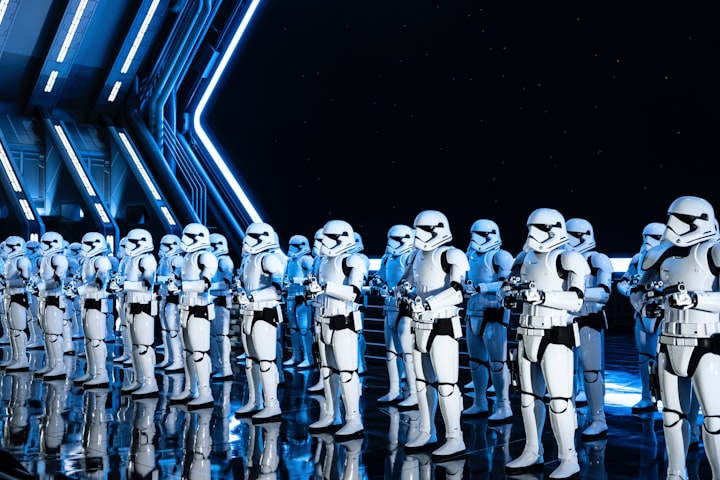The Evolution of AI Military Robots
Unveiling the Power of Boston Dynamics' Atlas

In the realm of advanced artificial intelligence (AI) and military robotics, Boston Dynamics stands as a pioneer, continually pushing the boundaries of what is technologically possible. One of its most remarkable creations is the Atlas, an AI military robot that has recently undergone jaw-dropping upgrades, showcasing its unparalleled capabilities in executing superhuman tasks. With over two decades of experience in developing military-focused AI robots, Boston Dynamics has paved the way for a new era of cutting-edge technology, and it is not alone in this endeavor. As other robotics companies rapidly join the fray, the landscape of military applications for AI is evolving at an unprecedented pace.
Before Atlas captured the spotlight, Boston Dynamics had already made a significant mark in the field with creations like Big Dog. Conceived in 2005, Big Dog represented one of the earliest military robots designed by the company. This four-legged metal beast showcased a combination of strength and agility reminiscent of an actual war machine. Its primary role was to carry heavy equipment for soldiers across challenging terrains, inaccessible to traditional military vehicles. With a distinctive design and the absence of wheels, Big Dog demonstrated remarkable speed and the ability to overcome obstacles that would thwart even the most seasoned soldiers.
Standing at two and a half feet tall and measuring three feet in length, Big Dog resembled a compact, powerful war machine with the size of a small mule. Its introduction in 2005 marked a significant leap forward in military robotics, garnering attention and laying the foundation for Boston Dynamics' subsequent innovations.
Building on the success of the original Big Dog, Boston Dynamics unveiled Big Dog 2.0 in 2010, sending shockwaves through both the military and robotics communities. The internet buzzed with excitement as this upgraded version showcased enhanced capabilities and reinforced the company's commitment to advancing military robotics technology.
Big Dog 2.0 retained its predecessor's distinctive features but introduced refinements that further solidified its status as a groundbreaking military robot. The internet's enthusiastic response highlighted the public's growing interest in the intersection of AI and military applications, setting the stage for Boston Dynamics to take its technological prowess to even greater heights.
While Big Dog made significant strides, the spotlight eventually shifted to Boston Dynamics' magnum opus – Atlas. Atlas represents the pinnacle of AI military robots, a revolutionary creation that has recently undergone astonishing upgrades, showcasing its ability to perform tasks that were once deemed impossible for machines.
Equipped with advanced AI capabilities, Atlas can execute superhuman tasks, marking a significant leap forward in the integration of AI into military operations. Its humanoid design allows for unprecedented flexibility and adaptability in navigating complex environments, making it an invaluable asset for a wide range of military applications.
The jaw-dropping upgrades bestowed upon Atlas have further elevated its status in the realm of AI military robots. With a combination of dexterity, agility, and problem-solving skills, Atlas can navigate challenging terrains, handle objects with precision, and even perform intricate tasks that previously required human intervention.
While Boston Dynamics remains a key player in the field, the landscape of AI military robotics is evolving rapidly, with numerous other companies entering the arena. These new entrants are contributing to the expansion of technology specifically tailored for military applications, fostering healthy competition and driving innovation.
As the demand for AI military robots continues to grow, these companies are exploring novel approaches to enhance autonomy, intelligence, and versatility. The collaborative efforts of multiple entities are shaping a future where AI seamlessly integrates into military operations, offering solutions to complex challenges and augmenting the capabilities of human forces.
The journey from Big Dog to the upgraded Atlas reflects the remarkable progress in the field of AI military robotics. Boston Dynamics' commitment to innovation has not only produced groundbreaking robots but has also set the stage for a broader exploration of AI's role in military applications.
As the capabilities of AI military robots continue to expand, it is essential to consider the ethical implications and the responsible use of such technology. The intersection of AI and military operations brings both unprecedented opportunities and challenges, emphasizing the need for careful consideration of the impact on warfare, security, and the future of human-machine collaboration. The evolution of AI military robots represents a pivotal moment in technological history, heralding a new era where advanced machines stand shoulder to shoulder with human forces on the battlefield.
About the Creator
Enjoyed the story? Support the Creator.
Subscribe for free to receive all their stories in your feed. You could also pledge your support or give them a one-off tip, letting them know you appreciate their work.





Comments
There are no comments for this story
Be the first to respond and start the conversation.